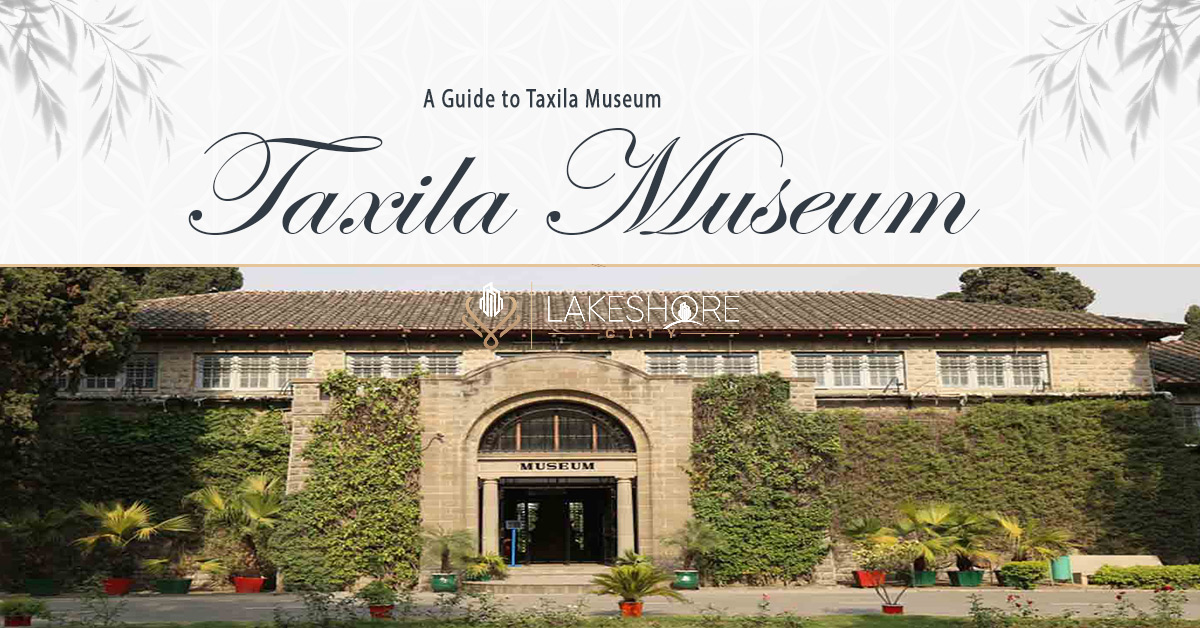Tourists who love archaeology and history will love Taxila. Sir Alexander Cunningham discovered Taxila’s remnants in the mid-19th century, making the site a UNESCO World Heritage Site in Pakistan in 1980. The city was important in the Gandhara Kingdom between 1000 BC and 1000 AD. The Taxila Museum is essential for exploring Taxila’s history. This guide covers what to expect at the Taxila Museum, how to get there, its history, and its hours.
About Taxila Museum
The then Viceroy and Governor-General of British India, Lord Chelmsford, lay the foundation stone for the Taxila Museum in 1918 after the ruins were discovered in the 1800s. Nearly ten years later, the museum opened with a central hall and one gallery with artifacts on either side on April 5, 1928.
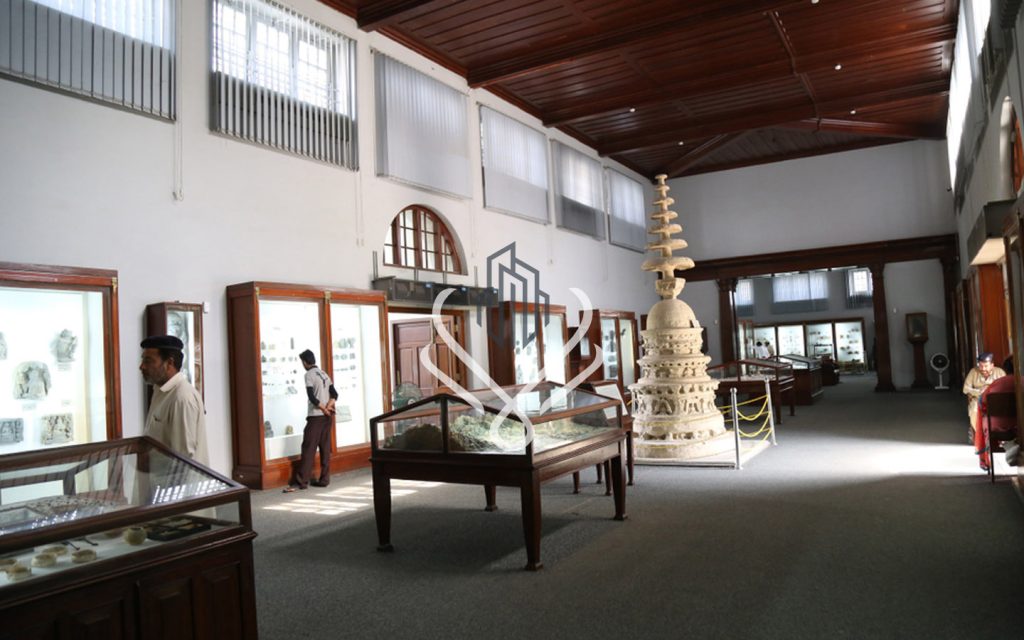
The Archaeological Museum of Taxila houses all the antiques, artifacts, and statues uncovered during excavations. The museum displays 7,000 artifacts and antiquities from bygone millennia, showcasing their culture, history, and achievements.
How to Reach the Taxila Museum?
The Taxila Archaeological Museum is a 5-minute walk from Bhir Mound, one of the three ancient main cities in the area, on the Kalabagh-Nathia Gali Road (N-125). Businesses line the road opposite the ancient city, including shops, hotels, gas stations, and banks. Thus, Punjabis may easily reach Taxila by road. If that’s not possible, Taxila’s railway station is a 5-minute drive from Bhir Mound and the Archaeological Museum.
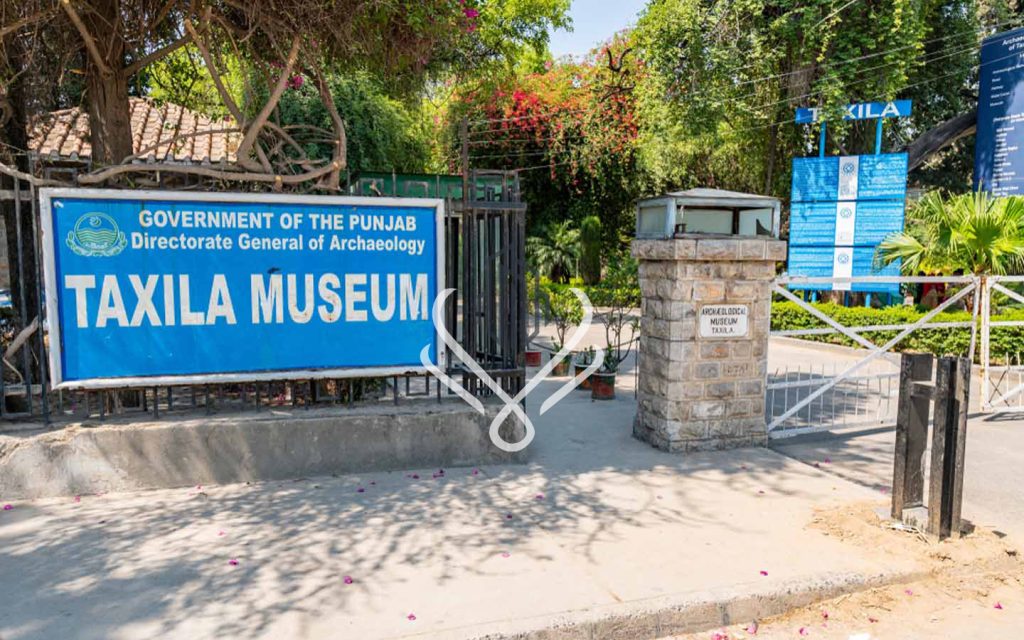
Artifacts on Display at Taxila Museum
After its founding as a city of Gandhara, Taxila was ruled by many kings, hence its museum has antiquities from numerous ages. Here are some Taxila Museum exhibits:
- Stone Statues and Sculptures
- Terracotta Sculptures
- Inscriptions and Ancient Writings
- Silver and Gold Jewellery
- Ancient Coins
- Grooming Items
- Metallic Cookware
- Decorative Pieces
- Tools
- Pottery
- Weapons
Each display will be detailed below.
Stone Statues and Sculptures
In the museum’s main hall, most stone sculptures are from the 1st to 3rd centuries AD. The largest collection of statues is of Gautama Buddha, the founder of Buddhism. The area’s artifacts include Greek and Hindu statues.
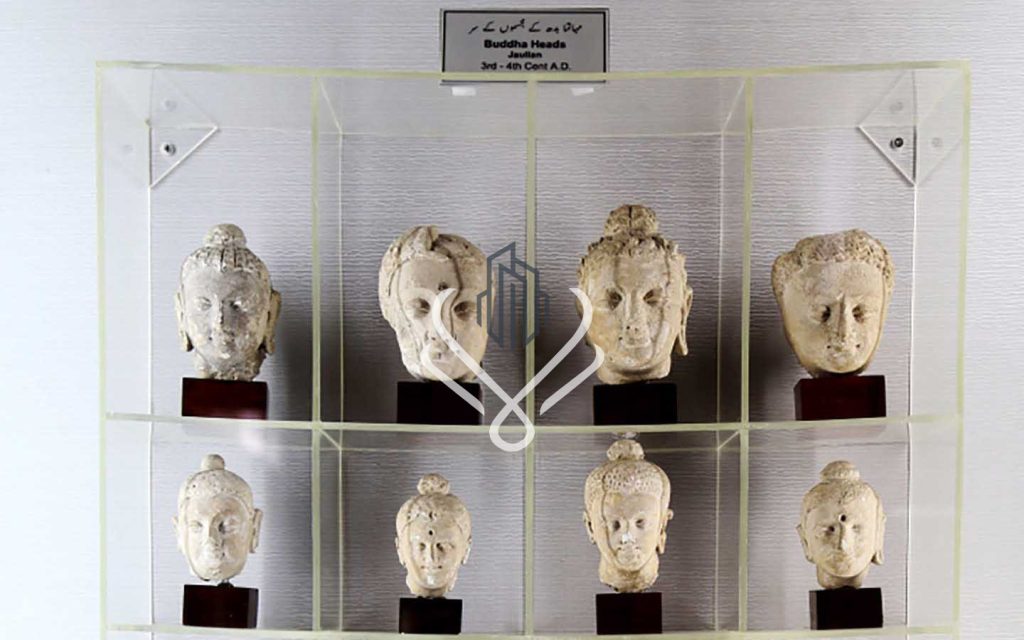
Inscriptions and Ancient Writings
Writings and inscriptions from the 3rd to 5th century AD were found at Taxila. The three main ancient scripts on display are Aramaic, Brahmi, and Kharoshthi, Gandhara’s official script. Writing tablets and stone, clay, and copper inkpots were uncovered during excavations and are proudly displayed at the museum.
Ancient Coins
Ancient coins were made of gold, copper, and silver and featured symbols of the governing kings. The Taxila Museum has a rich currency collection from the Moriyan period (4th to 6th century BC). Indo-Greek coins from the 1st to 2nd century BC and Scythian, Parthian, Kushan, Sasanian, Kidara Kushan, and Hephthalites or White Hun coins from 90 BC to the 5th century AD also survived.

Silver and Gold Jewellery
The museum’s jewelry department has gold and silver necklaces, chains, belts, pendants, bracelets, bangles, anklets, and rings. Many of the items show Greco-Roman influence on Taxila’s civilization.
Metallic Cookware
Ancient cookware, such as pots, goblets, jugs, dishes, cups, pans, spoons, ladles, and others, was fashioned of metal to withstand open fires. Many found items show superb workmanship and were made of silver, bronze, and copper.
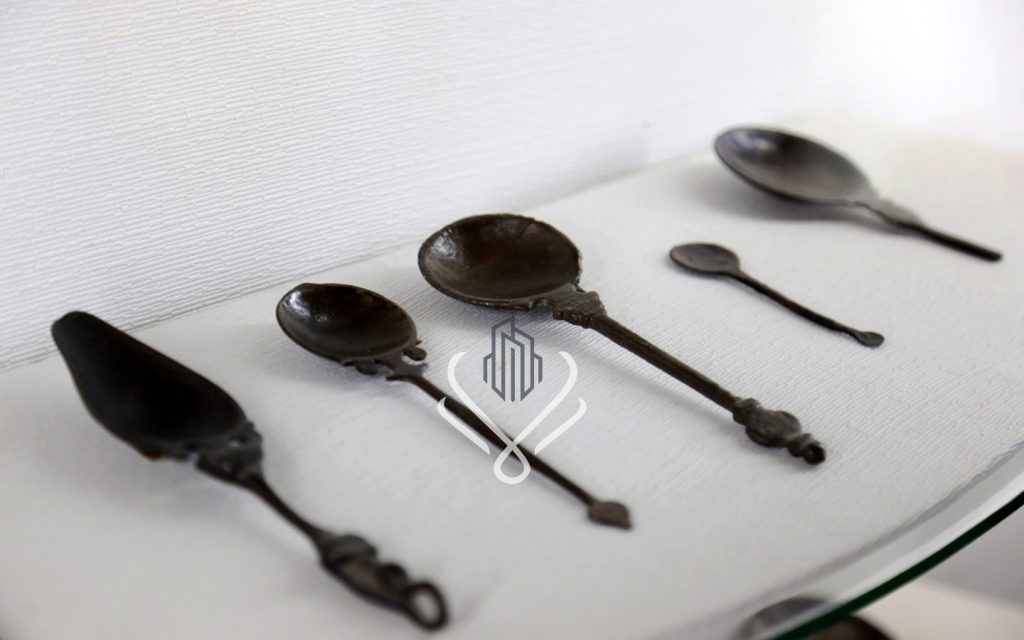
Grooming Items
The remains of Taxila contained ivory combs, copper mirrors, hairpins, and other grooming tools from several millennia ago.
Decorative Pieces
Crystal-carved figurines, glass bottles, children’s toys, and delicate shells, bone, and ivory artifacts were found in the old cities.
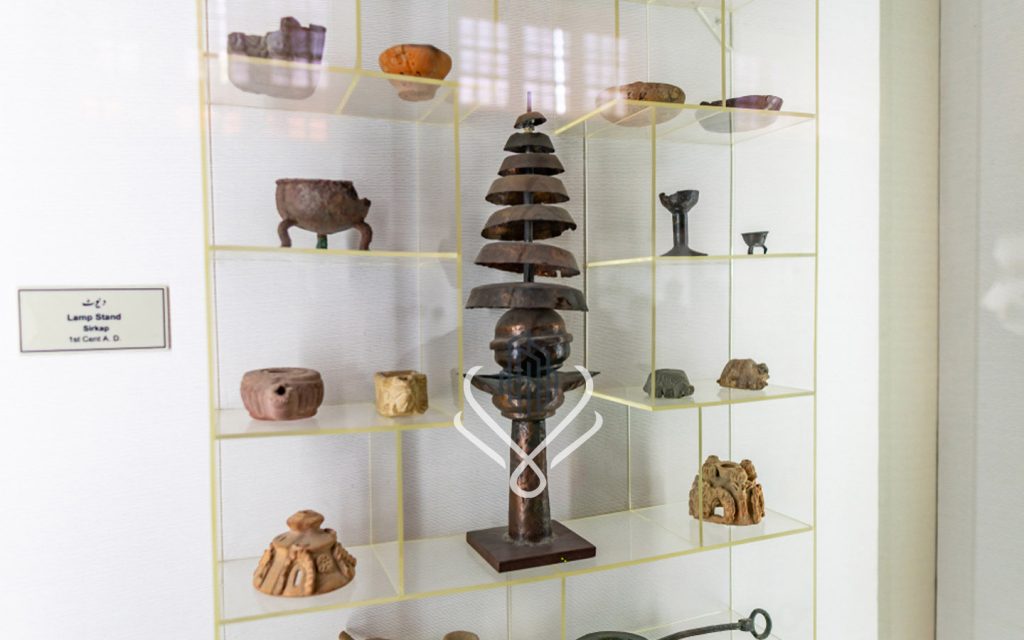
The excavation of Taxila revealed ancient tools and instruments. Old farmer, physician, potter, and goldsmith tools are the most interesting.
The Taxila Museum has a pottery collection.
The museum collects pottery, including storage jars, flasks, jugs, bowls, cooking pots, goblets, and water containers. Considering their age, most of these are well maintained, proving earthen vessels are durable.
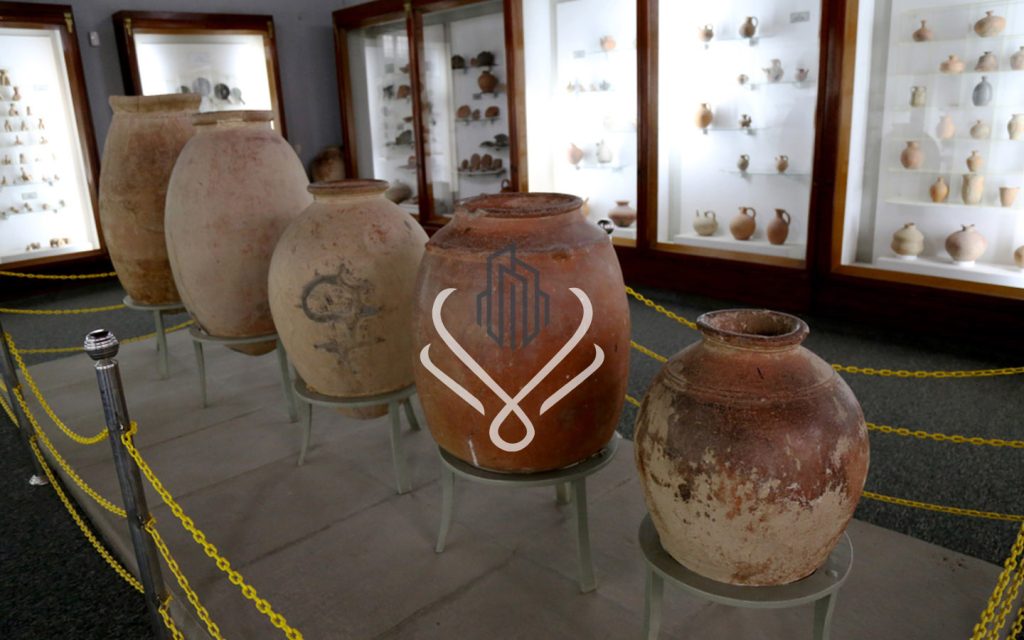
New monarchs conquered Taxila with their forces many times over the years. All invaders put their marks on the region during the continual transformation, which led to several battles. Archaeologists found swords, arrowheads, daggers, spearheads, javelins, and armor from every age, which are displayed in the museum and reflect Taxila’s stormy past.
When to Visit the Taxila Museum?
The Taxila Museum is open every day from 9 am to 12:30 pm and 2:30 to 4 pm. Taxila Museum tickets cost locals PKR 20 and tourists PKR 500. Taxila Museum guides can enhance your visit.
This finishes our Taxila Museum guide. Visit additional Pakistani UNESCO World Heritage Sites? Visit Mohenjo-Daro or Lahore Fort for history.
Conclusion
The Taxila Museum is a treasure trove of artifacts and antiquities from the ancient city of Taxila, showcasing the rich culture, history, and achievements of the Gandhara Kingdom. The museum’s diverse collection includes stone sculptures, ancient writings, coins, jewelry, cookware, and more, providing visitors with a fascinating glimpse into the past.
FAQs
Q1. What is Taxila’s historical significance?
Taxila was an important city in the Gandhara Kingdom between 1000 BC and 1000 AD, and its remnants were declared a UNESCO World Heritage Site in 1980.
Q2. What does the Taxila Museum house?
The Taxila Museum displays over 7,000 artifacts and antiquities, including stone sculptures, terracotta sculptures, inscriptions, ancient writings, jewelry, coins, cookware, tools, pottery, and weapons.
Q3. What are some highlights of the Stone Statues and Sculptures collection?
The museum features a significant collection of stone sculptures, with a focus on Gautama Buddha statues and Greek and Hindu sculptures dating from the 1st to 3rd centuries AD.
Q4. What ancient scripts are on display at the museum?
The museum showcases ancient writings and inscriptions in Aramaic, Brahmi, and Kharoshthi scripts, offering insight into the languages and writing systems of the Gandhara region.
Q5. When is the Taxila Museum open to visitors?
The Taxila Museum is open daily from 9 am to 12:30 pm and 2:30 pm to 4 pm. Admission tickets cost PKR 20 for locals and PKR 500 for tourists, with guides available to enhance the museum experience.
Our Featured Article:
Read More: Government Urged to Promote Tourism in the Country
Read More: Swat Invites Snow-Seeking Tourists as Police Ensure Safety
Don’t miss the chance to invest with Lakeshore! Secure your investment today by investing your financial investment with Lakeshore in the following available options like Lakeshore City, Lakeshore Club, and Lakeshore Farms.
For More updates, please Contact +92 335 7775253 or visit our website https://lakeshorecity.com/
Lakeshore City is the upcoming elite lifestyle at Khanpur Dam. Offering no parallel amenities for the members and owners of distinguished farmhouses.
Become Part of Luxurious Lifestyle
Contact: 0335 7775253


